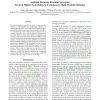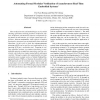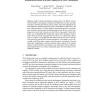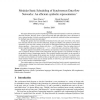77 search results - page 4 / 16 » Size reduction of complex networks preserving modularity |
CORR
2010
Springer
13 years 7 months ago
2010
Springer
The semi-automatic or automatic synthesis of robot controller software is both desirable and challenging. Synthesis of rather simple behaviors such as collision avoidance by apply...
QUESTA
2008
13 years 6 months ago
2008
We consider a discrete-time tree network of polling servers where all packets are routed to the same node (called node 0), from which they leave the network. All packets have unit...
VLSID
2003
IEEE
14 years 7 months ago
2003
IEEE
Most verification tools and methodologies such as model checking, equivalence checking, hardware verification, software verification, and hardware-software coverification often fl...
TACAS
2012
Springer
12 years 2 months ago
2012
Springer
Today’s Internet interdomain routing protocol, the Border Gateway Protocol (BGP), is increasingly complicated and fragile due to policy misconfigurations by individual autonomou...
EMSOFT
2009
Springer
13 years 11 months ago
2009
Springer
This paper addresses the question of producing modular sequential imperative code from synchronous data-flow networks. Precisely, given a system with several input and output flow...




